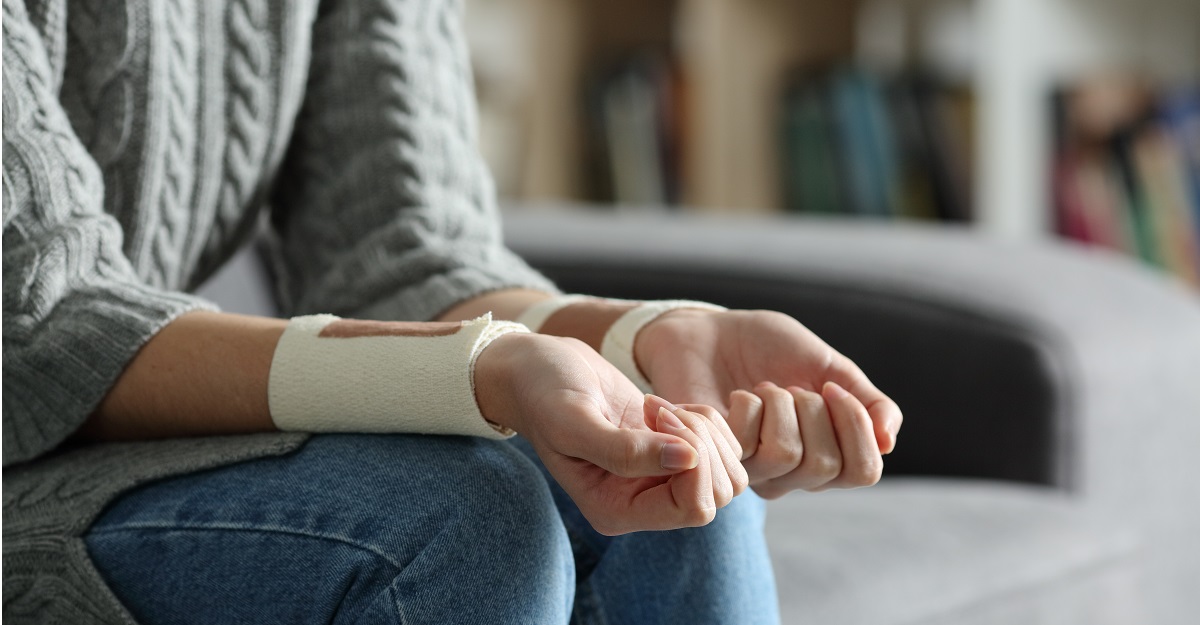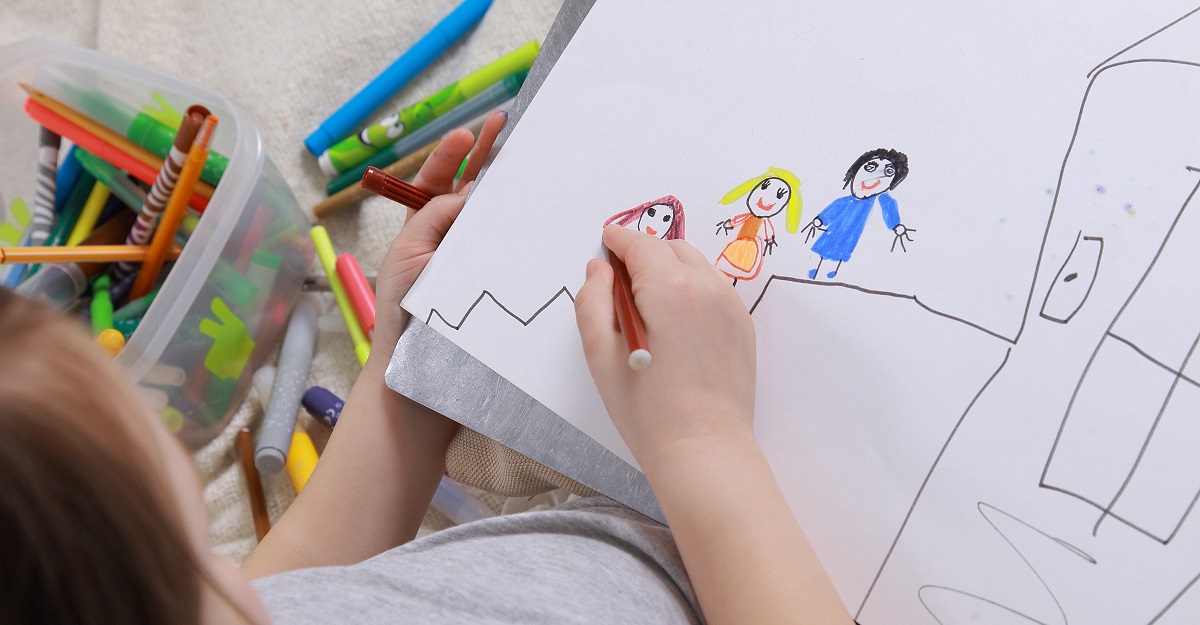Why Do People Self-Harm?
Published By Justin Baksh, LMHC, MCAP
June 12, 2022

Emotions can be hard to navigate, especially for youth. There is a lack of understanding when it comes to how to deal with overwhelming feelings of sadness, anxiousness, anger, and fear. Individuals trying to cope with those emotions may turn to self-harm.
It begins with the urge to purge: Purge pain, purge anger, purge sadness. Purge any emotion that is uncomfortable and difficult to manage. Self-harm triggers a sense of release accompanied a wave of endorphins that may heighten mood. This gives the suffering individual a euphoric feeling, leaving the impression that the self-inflicted pain is helping them.
For others, there may be no emotion. This is common with individuals dealing with depression, who are looking to “feel anything”. Experiencing self-harm makes them feel and see their pain.
For victims of trauma such as childhood abuse, sexual abuse, assault, and neglect, self-harm may be an outlet to gain control, or feel in control of their own bodies and mind.
What is Self-Harm?
“Of the multitude of reasons behind self-harming behavior, a ‘cry for help’ is only one. As a mental health worker acknowledged to me once, it can be very effective at communicating distress. But that’s not the same as pure attention seeking. Studies suggest half, or less than half, of people engaging in self-harm will seek help; it is more likely to be hidden than to be flaunted. ” – (Reid, 2019)
Self-harm is the act of inflicting pain on oneself intentionally. In the psychology world, it is known as non-suicidal self-injury (NSSI). There are many ways in which one may self-harm, including, but not limited to: burning, picking, reopening wounds, and, most commonly. cutting with sharp objects such as razor blades.
The act of self-harm has been heavily stigmatized and is often kept secret, despite how common it is in adolescents and young adults. Studies have estimated that from 4 to 17 percent of adolescents engage in self-harming behaviors. (Muehllenkamp, et al., 2012)
Self-harm is not a mental illness. However, it can be a symptom of a psychiatric condition such as borderline personality disorder, depression, obsessive compulsive disorder, post-traumatic stress disorder, and anxiety.
The majority (72 percent) of people who self-harm cited interpersonal issues as the reason for the behavior in one study of 200 patients. (Ghimire, et al., 2014)
Although the intention self-harm is not suicidal, it is a “predictor of later suicide attempts,” account to a Journal of Adolescent Health Study.
Who is at Risk for Self-Harm?
“I honestly don’t know why I cut myself the first time. I know I didn’t want to die, and I’m not sure why my brain would come up with the twisted idea that hurting myself would somehow make me feel better. I didn’t know anybody who self-harmed, and at the time I didn’t even know that it had a name. I just knew I couldn’t stand how I felt. My insides were balled up in a knot, screaming to be let out. I didn’t know why I cut the first time, but once I started, I couldn’t stop.” – (Suhan, 2016)
Although self-harm can happen at any age, it is much more common among pre-teens and adolescents. In fact, 77 percent of those who self-harm are under age 35. (Ghimire, 2014)
Teens face challenges such as peer pressure, the pressure to fit in, depression, and loneliness putting them at a higher risk for self-inflicted injury.
The following factors can also increase the risk of self-harm:
Risk Factors for Self-Harm
- Being Bulled or Rejected by Peers
- Being Exposed to Others Who Self-Harm
- Childhood Trauma
- Lack of Body Awareness
- Mental Conditions
- Objectification and/or Devaluation of the Body
- Social Isolation
In addition to the above, the influence of drugs and alcohol can be a factor in self-harm.
What are the Forms of Self-Harm?
“I am a cutter, you see. Also a snipper, a slicer, a carver, a jabber. I am a very special case. I have a purpose. My skin, you see, screams. It’s covered with words – cook, cupcake, kitty, curls – as if a knife-wielding first-grader learned to write on my flesh.” – Gillian Flynn, Sharp Objects
Skin cutting is the most common form of self-harm, accounting for 70 to 90 percent of cases. Hitting and head banging are the next most common forms, at 21 to 44 percent of instances, while 15 to 35 percent involve burning. Other methods range from inserting sharp objects into the body to injesting harmful substances. (Mental Health America, n.d.)
Forms of Self-Harm
- Burning the Skin
- Cutting (including Cutting Words and Symbols into the Skin)
- Head of Body Part Banging
- Inserting Objects Beneath the Skin
- Picking at Wounds
- Piercing the Sking with Sharp Objects
- Pulling Hair Out
- Scratching
- Swallowing Foreign Objects
Where Do People Self-Harm?
Self-injury may be inflicted on any part of the body. Common areas of the body where people tend to inflict harm are the arms, wrists, legs and thighs. The front of the torso and the groin area have also been reported as target body points for self-injury.
Recognizing, Preventing & Treating Self-Harm
Recognizing the signs of self-harm may be very difficult and, sometimes, impossible. In adolescents and young adults, it is crucial to keep the dialogue open about mental health. Junior high and high school can be a very trying time for teens, and they encounter many situations and emotions that they are not equipped to deal with psychologically.
It’s always a good idea to keep a watch on your teenage or adolescent children for the signs of mental distress. In fact, addressing these issues early can prevent self-harm and other harmful behaviors before they happen.
Signs of Mental Distress in Teenagers & Adolescents
- Anger/Irritability
- Anxiousness
- Becoming Withdrawn
- Body Dysphoria
- Change in Energy Levels
- Decreased Functioning at Home or School
- Depressed Mood
- Difficulty Managing Emotions
- Eating More/Eating Less
- Excessive Worry
- Lack of Interest in Former Hobbies and Activities
- Low Self-Esteem
- Personality Changes
- Piercing the Sking with Sharp Objects
- Pulling Hair Out
- Relationship Problems
- Trouble Sleeping/Sleeping Too Much
- Scratching
- Swallowing Foreign Objects
Warning Signs of Self-Harm
If mental distress is not caught early, it may progress to self-harm. Warning signs that someone you love may already be engaging in self-inflicted injury include:
Signs of Self-Harm
- Frequent Unexplained Injury (Accompanied by Excuses for These Injuries)
- Patches of Hair Loss
- Self-Isolation
- Wearing Clothing that is not Weather-Appropriate (e.g., Jeans or Sweatpants at the Beach, Long Sleeves on a Hot Summer Day, etc.)
What Can Happen to Those Who Self-Harm?
“The first month of my freshman quarter was one of the hardest for me as I’m sure it is for a lot of new college students. I had a mental breakdown in the first month and fell into a deep depression fall quarter. In October 2018, I started hurting myself again but first called a friend asking them to come to my room because I needed help. That night I found it to be incredibly scary as I didn’t see myself stopping had it not been for that friend coming and knocking on my door. A couple of my friends and I treated the wound I had created, but eventually I had to go to the emergency room at 6am as I realized I couldn’t even stand to walk and my limp was getting worse. I was treated for not only the wound, but two infections I had developed as a result of scratching.” – (University of Washington, 2021)
Engaging in self-harm behaviors can be very dangerous. Remember, self-harm is not the same as a suicide attempt, however, it can cause long-lasting damage. Self-harming can lead to infections, permanent scars, disfiguration, and severe injury. Sometimes, it can be accidently fatal.
Yet the effects go far beyond the physical. Those who self-harm can experience increased feelings of shame and guilt accompanied by low self-esteem and decreased self-worth. Self-harm can also make psychiatric disorders worse.
Self-Harm Treatment
“Other times, I look at my scars and see something else: a girl who was trying to cope with something horrible that she should never have had to live through at all. My scars show pain and suffering, but they also show my will to survive. They’re part of my history that’ll always be there.” – Cheryl Rainfield, Scars
Seeking treatment for yourself or a loved one coping with self-harm is very important. Psychiatrists, therapists, and support groups can provide the coping mechanisms necessary to manage impulses associated with self-injury.
Upon seeking treatment, a full evaluation will be conducted, including family history, trauma history, and, possibly, diagnosis of mental health disorders. A recommend course of treatment will also be established, which will be adjusted according to individual needs and progress.
Medication may also be prescribed to aid in the coping and healing process. In severe cases of self-harm, hospitalization or inpatient treatment may be needed. Therapy modalities used in treatment of NSSI include Psychodynamic Therapy, Cognitive Behavioral Therapy and Dialectical Behavioral Therapy.
Neurofeedback is helpful for treating underlying anxiety disorders when present, while transcranial magnetic stimulation can aid in treating depression, especially when medication is not effective.
Help for Self-Harm is Out There
There are so many resources and tools to aid adolescents and their parents in navigating mental distress and self-harm. Don’t ignore the signs; make the call to a mental health professional today.
- Flynn, G. (2018). Sharp objects: A novel. Broadway Books.
- Ghimire, S., Devkota , S., Budhathoki, R., Sapkota, N., & Thakur, A. (2014). Psychiatric comorbidities in patients with deliberate self-harm in a tertiary care center. JNMA; Journal of the Nepal Medical Association. Retrieved June 12, 2022, from National Library of Medicine
- Mental Health America, (n.d.). Self-injury (cutting, self-harm or self-mutilation). Mental Health America. Retrieved June 12, 2022, from Mental Health America
- Muehlenkamp, J. J., Claes, L., Havertape, L., & Plener, P. L. (2012, March 30). International prevalence of adolescent non-suicidal self-injury and deliberate self-harm – child and adolescent psychiatry and Mental Health. BioMed Central. Retrieved June 12, 2022, from Biomedcentral.com
- Rainfield, C. (2010). Scars. Westside Books.
- Reid, G. (2019, July 3). My story of self-harm: Not just a cry for help. Street Roots. Retrieved June 12, 2022, from Streetroots.com
- Suhan, C. (2020, April 24). Why I stopped self-harming. The Mighty. Retrieved June 12, 2022, from The Mighty
- University of Washington, (n.d.). University of Washington’s disability and D/Deaf Cultural Center. D Center. Retrieved June 12, 2022, from University of Washington






